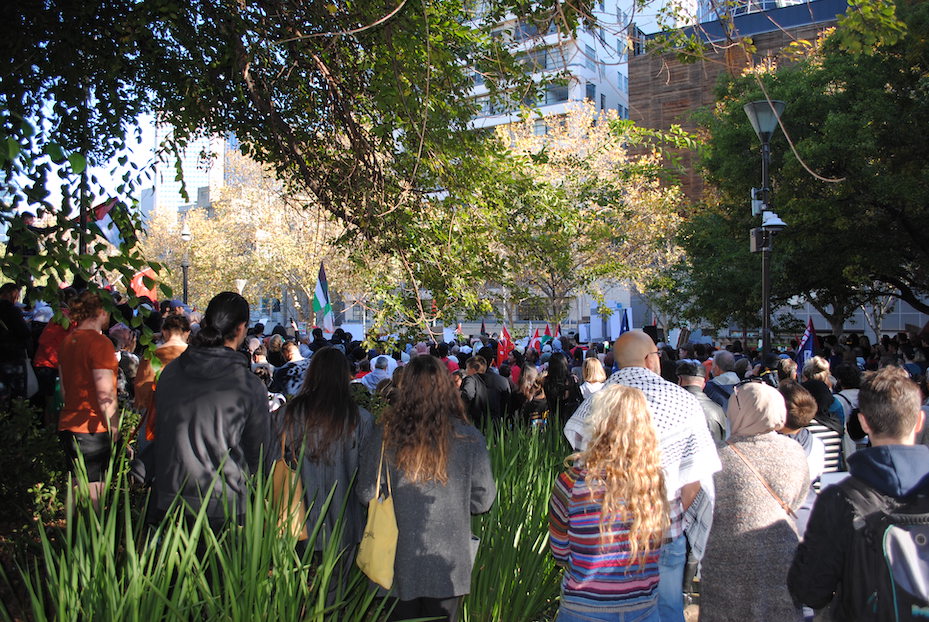Daniel Ghezelbash, UNSW Sydney and Saul Wodak, UNSW Sydney
Misinformation is a significant threat to our society. It undermines public discussion, erodes social cohesion, leads to bad policy and weakens democracy.
Misinformation on refugee and migrant issues is particularly pervasive – especially in the lead up to elections, as bad-faith actors try to promote fear, distrust and simplistic solutions.
And sometimes, misinformation is specifically targeted at migrant communities themselves, sowing division in an effort to influence elections.
So, what’s the best way to counter misinformation about refugees and migrants? And given the risk that publicly addressing lies and rumours can sometimes end up spreading them, when is misinformation best ignored?
A new report by the Kaldor Centre for International Refugee Law and the Behavioural Insights Team (a behavioural science research company) uses science to answer these questions.
Behavioural science explains why and how misinformation works. Understanding some of that science can empower all of us to stop its spread.
Misinformation increases during elections
The recent US presidential race provides a stark example of how misinformation on refugees and migrants soars during elections.
During one presidential debate, Donald Trump falsely claimed migrants in Ohio were “eating the pets”. Though entirely untrue, this baseless claim spread rapidly across social media.
Australia is not immune to such deception. While refugees and migrants make significant positive economic, social and cultural contributions to their host societies, politicians across the spectrum have falsely blamed them for issues ranging from rising house prices to crime.
This is not new. Back in the 2001 election campaign, government ministers made false claims that people seeking asylum had thrown their children overboard from a boat. These are widely regarded as having contributed to turning around the fortunes of the Howard government, which was then trailing in the polls.
Instead of addressing challenges with real solutions, these strategies scapegoat refugees and migrants, and ignore their immense positive contributions.
Misinformation leads to a more divided and polarised society. So, how does it spread?

6 ways misinformation spreads
Online platforms create the perfect breeding ground for misinformation to spread.
The rise of AI-generated misinformation – such as highly convincing deepfake images and videos – only exacerbates the problem.
Combating misinformation begins with understanding the psychological factors that drive its spread and influence.
Our new report identifies six key behavioural science principles that explain how misinformation takes hold:
1. Hot states: Heightened emotions, such as fear, outrage or anxiety, make people more reactive and less critical of misleading claims.
2. The messenger effect: People judge a message’s truth based on who shares it, often trusting friends and family over experts.
3. The mere-exposure effect: Seeing misinformation multiple times makes it seem more true, making people more likely to share it.
4. Confirmation bias: People are more likely to believe false information that aligns with their values and reject facts that challenge them.
5. Cognitive load: When overwhelmed by information, people are less likely to question what they see, making them more vulnerable to falsehoods.
6. Continued influence effect: Misinformation has a lasting effect on our attitudes and decisions, even after it has been corrected.
Building on these principles and an extensive review of research literature, we developed an evidence-based framework for countering misinformation about refugees and migrants.
It provides a step-by-step guide on what to do when faced with falsehoods, starting with recognising whether the misinformation is anticipated or already circulating.

When misinformation is anticipated
When you expect a particular false claim, but it’s not yet out there, then prebunk. Alert people to manipulation tactics before they become widespread.
This helps people recognise and resist misinformation before it takes hold.
When misinformation is already circulating
If false claims are already out there, first ask three questions before acting:
- is the claim prominent (visible and gaining traction)?
- is it persuasive (able to change people’s minds)?
- is it proximate (relevant to your audience and cause)?
If the answer to any of these questions is no, then reframe the agenda. Instead of amplifying falsehoods, shift your resources to sharing stories that reinforce accurate information and resonate with your audience’s values.
If misinformation is indeed prominent, persuasive and proximate, debunk it.
Use the fact, myth, fallacy, fact – or “fact sandwich” – method. Make the correction clear, credible and effective by stating the truth, then presenting the myth, explaining its flaws, and reinforcing the correct fact.
Here’s an example that leads with a fact, warns about the myth, explains the fallacy and then ends with a fact:
When Australia’s borders were closed during COVID, migration was at its lowest in a century — yet house prices still went up. The idea that cutting migration will magically solve the housing crisis doesn’t hold up against the evidence.
But some political actors are blaming migrants, as if they’re the main reason housing has become unaffordable.
In fact, this oversimplifies the problem. The housing crisis has been a long time in the making, and it’s now this severe because of past policy choices piling up.
There are many drivers of Australia’s housing crisis, including a lack of housing, rising construction costs, and tax breaks that distort the market. Migration is only a small piece of the puzzle.
How to engage audiences
The report also details seven strategies that drive reach and impact. These include publicly communicating in a way that’s:
- consistent
- repeated
- coordinated with other groups with similar goals
- appeals to your audience’s values and emotions, and
- uses humour.
One part of a broader approach
These strategies can be used by anyone seeking to push back against misinformation in our public debate, not just about refugees and migrants.
However, communication approaches are only one lever.
To turn the tide on misinformation, society needs systemic solutions. These include media literacy education and regulatory reform of online platforms.
As we approach Australia’s next federal election, addressing misinformation about refugees and migrants is more crucial than ever to protect refugees and migrants from harm, strengthen our democratic processes, and foster a more inclusive society.
Daniel Ghezelbash, Professor and Director, Kaldor Centre for International Refugee Law, UNSW Law & Justice, UNSW Sydney and Saul Wodak, Affiliate Researcher, Kaldor Centre for International Refugee Law, UNSW Law & Justice, UNSW Sydney
This article is republished from The Conversation under a Creative Commons license. Read the original article.











